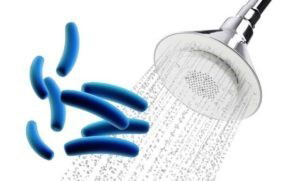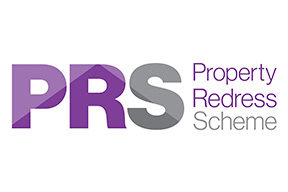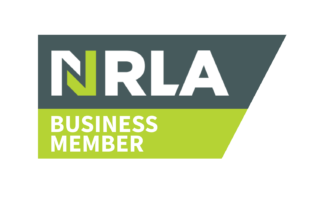👀 Legionnaires’ disease
Legionella is a bacterium which is capable of spreading a collection of diseases termed as Legionellosis. These diseases may be fatal like Legionnaires’ disease or may be less serious like Pontiac fever Legionnaires’ disease is a fatal form of pneumonia caused by inhaling the bacterium Legionella pneumophila that can be found naturally in water resources such as fresh water lakes, and reservoirs. Showers, boilers and other smaller tanks may also support growth and proliferation of Legionella pneumophila. Disease is contracted by drinking infected water, or from another infected person. The risk of this infection increases with age and amongst the following groups of people.
• Smokers and heavy drinkers
• Chronic respiratory or kidney disease patients
• Diabetics, people suffering from lung and heart disease.
Where does bacterium come from❓

Legionella bacteria are widespread in fresh water sources like rivers and lakes but very low in numbers. During favourable conditions this bacteria reproduces and increases in numbers. Purpose-built water systems like cooling towers, evaporative condensers as well as in hot & cold water systems where water is maintained at a low and high temperatures is favourite place of this bacterium for growth. Hence in all sorts of natural water systems including spa pools for work and domestic usage, the risk of the infection expands. When the temperature becomes suitable for microbial growth for example 20°C to 45°C the legionella bacteria began to increase in number and diversity by reproduction. Inadequate backflow protection also plays a key role in its growth. When material is present which provides nourishment to the bacteria then there increased chances of the bacterium forming.
Minimising the risk
Design:
Good design of the natural water system can minimise the risk of causing Legionnaires’ disease by ensuring:
• Evaporative cooling systems are enclosed as much as possible.
• That the system design has good flow of heat transfer to every part.
• That there is sufficient space and place for access for cleaning and maintenance purpose.
Water flow:
Water Stagnation causes the production of biofilms which further encourage growth of Legionella; hence makes conditions more complex. Avoid water stagnation and low flow of water in system. Followings areas encourage stagnation:
• Low or no flow areas in oversized storage tanks
• Outlets not used for longer than a week

• Blind ends of pipework with no flow
• Infrequently used equipment attached with system.
Management and maintenance:
Always make sure to clean the system to avoid any complications or sediments left over for bacterial growth and nourishment. Ensure that the system is well maintained and operates safely.
Suitable temperature control: Water temperature should be kept between 25°C and 50°C at any time during year is a practically best factor in controlling the risk of bacteria.
Legionella Risk Assessments for Landlords in UK

There is a duty for landlords to conduct risk assessment of any chances with exposure to Legionella pneumophilia microorganism, however health and safety laws doesn’t need landlords to obtain a “Legionnaires testing certificate “
If you’re a landlord and rent out your property or (even give a room on lease within your own home) then you have legal responsibility to ensure the health and safety of your tenant, by keeping any risks and hazards away from them.
Why test for legionella’s in a domestic property❓
Testing for legionella in a domestic property is not usually required but only required for specific circumstances. It is also known as the microbiological monitoring. So legionella monitoring should be carried out where there is doubt about the exposure of bacteria. In this regard the water systems are treated with biocides where water is usually stored or distributed
What are the consequences if a test isn’t carried out❓
Although law does not prescribe that the risk assessment should be done every month and local authorities also do not generally ask for evidence of the test. This is the grey area for the landlord which may lead to them being liable to be prosecuted under HSWA as they have to demonstrate to a court that they have carried out their duty of care according to UK law. Keeping all the consequences of Legionnaires’ disease in the mind of landlords should prompt them to keep record of risk assessment tests. In this regards periodically reviewing your risk assessment and carrying out any inspection of water systems is the best course of action, so that routine maintenance can be assured.
Legionella’s Reports
During 2000 to 2005, a total 49,930 confirmed Legionnaires’ disease cases were reported to NNDSS. In 2014 the majority of the cases occurred in people above 50 years of age institutional care or private rented accommodation.

Conclusion
Summarizing all the key points, Legionella (Legionnaires’ disease or Pontiac Fever) is caused by Legionella pneumophila a bacterium, which grows on hot and cold water reservoirs in commercial or domestic properties. The disease is spread through inhalation of contaminated droplets of water, or by other infected person. If a landlord gives their property on lease or rent in UK to a tenant then it becomes their legal requirement to carry out risk assessments of legionella bacteria, for the safety of person and property via the duty of care afforded to the tenant. In this assessment the causes of disease are observed and necessary tests are carried out for its control. Necessary treatment of water system is carried out, so that the growth of legionella can be controlled. If tenant reports Legionnaires’ disease then this leads to the complex consequences for landlord and even prosecution of landlord. So landlords should keep in mind that this is legal requirement to carry out risk assessment for legionella bacteria in their property before the property is leased or rented to a tenant.
Rest assured we offer this service for all our Customers!
If you have any questions or queries please call 01617132688
Sign up to our newsletter to receive the very latest information.
















